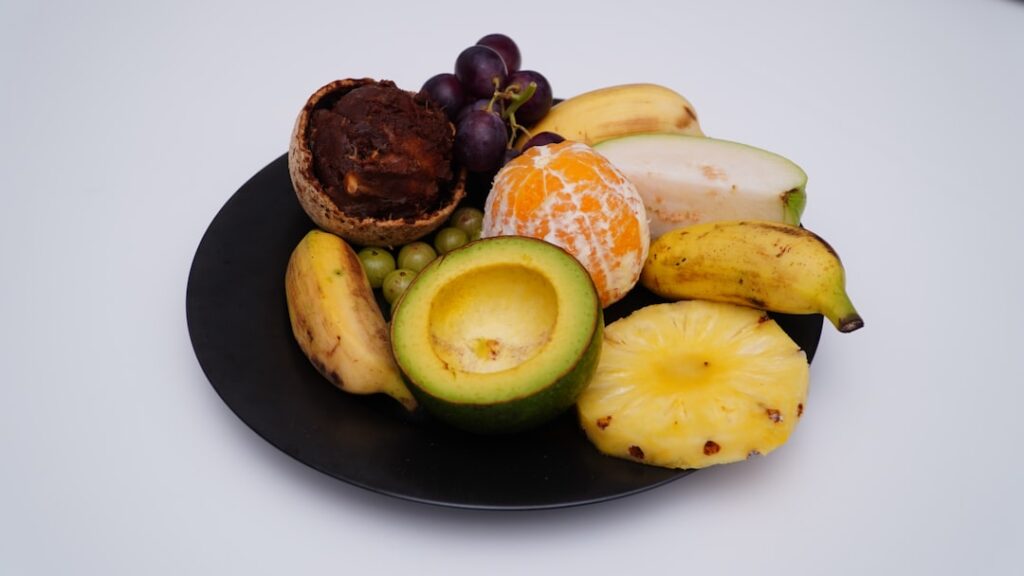Nourishing Your Body: A Deep Dive into Plant-Based Proteins
Have you ever found yourself wondering if a plant-based diet can truly provide all the protein your body needs? Perhaps you’re new to vegetarian or vegan eating, or maybe you’re simply looking to incorporate more plant-powered meals into your week, but feel a slight apprehension about maintaining adequate nutrient intake. It’s a common concern, especially when the narrative around protein often centers heavily on animal products. Yet, the truth is, the world of plants is brimming with robust protein sources, and understanding the best plant-based protein sources is far simpler and more empowering than you might imagine.
The core problem stems from a widespread misconception: that plant-based proteins are inherently “incomplete” or inferior, or that achieving sufficient protein without meat is a constant struggle. This belief can lead to unnecessary anxiety, feeling overwhelmed by food choices, and even missing out on the profound health and environmental benefits of a more plant-rich diet. Protein is not just for bodybuilders; it’s fundamental for every cell in your body – essential for muscle repair, enzyme production, hormone synthesis, and maintaining a healthy immune system. When protein intake is neglected, whether by choice or by misinformation, it can lead to fatigue, slower recovery, compromised immunity, and a general feeling of being undernourished. We’re here to break down these myths and equip you with practical, evidence-based knowledge to confidently fuel your body with the incredible power of plants.
Demystifying Plant Protein: The Complete Picture
Before diving into specific foods, let’s address the concept of “complete protein.” Proteins are made up of amino acids, and nine of these are “essential,” meaning our bodies cannot produce them and we must get them from our diet. Animal proteins typically contain all nine essential amino acids in sufficient quantities, leading to the “complete” label. For a long time, it was believed that plant proteins were largely “incomplete” and needed to be carefully combined at every meal. However, this has largely been debunked by modern nutritional science.
As the Academy of Nutrition and Dietetics states, “Plant protein can meet protein requirements when a variety of plant foods are consumed and energy needs are met.” The human body maintains an “amino acid pool,” meaning it can draw upon amino acids from foods consumed throughout the day to form complete proteins. The key is variety and sufficient calorie intake. Let’s explore some of the most potent sources:
Top-Tier Plant-Based Protein Powerhouses:
-
Legumes (Lentils, Chickpeas, Black Beans, Edamame)
These humble foods are nutritional titans. Lentils, for example, offer around 18g of protein per cooked cup, alongside an abundance of fiber, iron, and folate. Chickpeas (garbanzo beans) provide about 15g of protein per cup, making them excellent for hummus, curries, or roasted snacks. Black beans are another fantastic choice, with about 15g of protein per cup, often found in tacos, burritos, and salads. Edamame (young soybeans) are particularly noteworthy as a complete protein, offering about 18g of protein per cup, along with healthy fats and fiber.
Consider adding an infographic here: “Protein & Fiber Content of Common Legumes” showing serving sizes and values.
-
Soy Products (Tofu, Tempeh, Natto, Soy Milk)
Often hailed as the king of plant proteins, soy is a complete protein source, meaning it contains all nine essential amino acids. Tofu, made from condensed soy milk, is incredibly versatile and can contain 10-20g of protein per 3.5 ounces (100g) depending on firmness. Tempeh, a fermented soy product, offers an even denser protein punch, around 19g per 3.5 ounces, and also boasts probiotics due to fermentation. Natto, another fermented soy product popular in Japan, is also a complete protein source. Soy milk offers 7-8g of protein per cup.
Case Study: Sarah’s Marathon Fuel. Sarah, a 32-year-old marathon runner, transitioned to a plant-based diet and initially worried about muscle recovery. Following advice from a registered dietitian, she incorporated tempeh into her post-workout meals. “Tempeh has been a game-changer,” Sarah shared. “It’s not only high in protein but also easy to digest, and I feel my muscles recover much faster. I love it marinated and grilled in stir-fries.”
-
Quinoa
This ancient grain is unique among grains for being a complete protein, providing all essential amino acids. One cup of cooked quinoa delivers approximately 8g of protein, plus a good dose of fiber, magnesium, and iron. It’s a fantastic rice alternative for salads, bowls, and side dishes.
-
Nuts & Seeds (Chia, Hemp, Flax, Almonds, Walnuts)
Tiny but mighty, seeds like chia (6g protein per 2 tbsp), hemp (10g protein per 3 tbsp), and flax (3g protein per 2 tbsp) are excellent protein sources, often rich in omega-3 fatty acids and fiber. Hemp seeds, in particular, are considered a complete protein. Almonds (6g protein per 1/4 cup) and walnuts (4g protein per 1/4 cup) also contribute significantly, along with healthy fats and antioxidants.
-
Whole Grains (Oats, Brown Rice, Spelt, Farro)
While not as protein-dense as legumes or soy, whole grains contribute valuable protein to your overall diet. A cup of cooked oats provides about 6g of protein, while brown rice offers around 5g. When combined with other plant foods, their amino acid profiles complement each other beautifully.
-
Green Vegetables (Broccoli, Spinach, Brussels Sprouts)
Though not primary protein sources, green vegetables offer surprisingly significant amounts, especially when consumed in larger quantities. Broccoli provides about 2.6g of protein per cup, spinach about 5g per cooked cup, and Brussels sprouts 4g per cup. Their nutrient density and fiber content make them indispensable.
Expert Strategies for Optimizing Your Plant Protein Intake
Achieving optimal protein intake on a plant-based diet isn’t about meticulously combining foods at every meal, but rather focusing on variety and consistency. Here are evidence-based strategies to ensure you’re getting all you need:
-
Embrace Dietary Diversity: The True “Complete Protein” Strategy
Forget the myth that you must eat beans and rice together in the same meal to get a “complete protein.” This idea, once widely promoted, has been largely refuted. Dr. Walter Willett, Professor of Epidemiology and Nutrition at Harvard T.H. Chan School of Public Health, emphasizes that “the protein requirements for adults are easily met by eating a variety of plant foods over the course of a day.” Your body is incredibly efficient at storing and combining amino acids from various foods you eat throughout the day. Focus on eating a wide range of legumes, grains, nuts, and seeds daily, and your body will take care of the rest.
Consider adding a visual: A plate divided into different food groups, showing the variety.
-
Prioritize Protein-Rich Whole Foods at Each Meal
Make an effort to include a significant plant protein source in every meal. This could be lentils in your soup, chickpeas in your salad, tofu in your stir-fry, or a handful of almonds with your oatmeal. This consistent intake helps maintain stable energy levels and supports ongoing muscle repair and growth.
-
Don’t Fear Fortified Foods & Supplements (When Needed)
Plant-based milks (soy, pea) are often fortified with protein. For athletes or those with higher protein needs, plant-based protein powders (pea, rice, hemp) can be a convenient way to boost intake, especially post-workout. Always choose powders with minimal added sugars and clean ingredients.
-
Listen to Your Body and Adjust
Pay attention to your satiety levels and energy. If you’re feeling constantly hungry or aren’t recovering well from exercise, you might need to increase your protein intake or diversify your sources. Working with a registered dietitian can provide personalized guidance.
Practical Plant-Powered Meal Planning Ideas:
- Breakfast: Oatmeal topped with hemp seeds, berries, and a dollop of almond butter; Tofu scramble with spinach and black beans; High-protein plant-based yogurt with granola.
- Lunch: Lentil soup with whole-grain bread; Quinoa salad with chickpeas, various vegetables, and a tahini dressing; Tempeh sandwich on whole wheat bread.
- Dinner: Black bean burgers on whole-wheat buns with sweet potato fries; Chickpea and spinach curry with brown rice; Pasta with lentil-based marinara sauce and a side of steamed broccoli.
- Snacks: Roasted edamame; Handful of almonds or walnuts; Apple slices with peanut butter; Hummus with vegetable sticks.
Common Misconceptions About Plant-Based Protein
Despite growing awareness, several myths persist around plant-based protein. Let’s debunk some of the most common ones:
Myth 1: You Can’t Build Significant Muscle on a Plant-Based Diet.
Reality: This is unequivocally false. Numerous plant-based athletes, from bodybuilders like Nimai Delgado to strongmen like Patrik Baboumian, demonstrate that ample muscle mass and strength can be achieved without animal products. Research published in the Journal of the International Society of Sports Nutrition (2022) concluded that “current evidence indicates that plant-based diets can support muscle growth as effectively as omnivorous diets, provided that protein intake is sufficient and of good quality.” The key is adequate overall protein intake, often slightly higher for plant-based athletes to compensate for potential differences in bioavailability, and ensuring a diverse diet to cover all amino acids.
Myth 2: Plant Proteins Are Always “Lower Quality” Than Animal Proteins.
Reality: While some individual plant proteins might have a limiting amino acid, the overall quality of a varied plant-based diet is excellent. The focus should shift from individual protein “quality” to the overall dietary pattern. Furthermore, plant proteins come packaged with fiber, vitamins, minerals, and antioxidants, which animal proteins generally lack. This comprehensive nutritional profile often leads to better health outcomes.
Myth 3: You’ll Feel Constantly Hungry on a Plant-Based Diet.
Reality: Plant-based meals, especially those rich in legumes, whole grains, nuts, and seeds, are often high in fiber. Fiber is incredibly satiating, helping you feel fuller for longer and regulating blood sugar. While it’s true that plant foods can sometimes be lower in calories by volume, ensuring adequate protein and healthy fats, along with sufficient caloric intake, will prevent hunger.
The Broader Benefits of Embracing Plant Proteins
Beyond meeting your protein needs, integrating more plant-based protein sources into your diet offers a cascade of health and environmental advantages:
- Enhanced Heart Health: Plant-based diets are consistently linked to lower risks of heart disease, lower cholesterol levels, and better blood pressure control. The abundance of fiber, healthy fats, and antioxidants found in plant proteins plays a crucial role. A comprehensive review published in Circulation (2020) by the American Heart Association highlighted that plant-based dietary patterns are associated with reduced risk of cardiovascular disease.
- Improved Gut Health: The high fiber content in most plant proteins acts as a prebiotic, feeding beneficial gut bacteria and promoting a healthy microbiome, which is vital for digestion, immunity, and even mood.
- Reduced Risk of Chronic Diseases: Studies suggest that diets rich in plant proteins are associated with a lower risk of type 2 diabetes, certain cancers, and obesity.
- Environmental Sustainability: Producing plant proteins generally requires significantly less land, water, and energy, and generates fewer greenhouse gas emissions compared to animal agriculture. Shifting towards more plant-based eating is a powerful way to reduce your ecological footprint.
Navigating Your Plant-Powered Journey with Confidence
The journey to embracing more plant-based protein sources is not about deprivation, but discovery. It’s about opening up to a vibrant world of flavors, textures, and incredible nutritional benefits. By understanding the true nature of plant proteins, prioritizing variety, and debunking outdated myths, you can confidently fuel your body, optimize your health, and contribute to a more sustainable future. Empower yourself with this knowledge and start exploring the vast array of delicious and nutritious options that the plant kingdom has to offer. Your body, and the planet, will thank you.
About the Author
Dr. Alex Thorne, PhD, RD. Dr. Alex Thorne is a Registered Dietitian and holds a PhD in Nutritional Sciences from the University of California, Davis. With over a decade of experience in dietary counseling and research, Dr. Thorne specializes in evidence-based plant-based nutrition, sports nutrition, and sustainable eating practices. Alex is passionate about translating complex scientific findings into practical, empowering advice for individuals seeking to optimize their health through food.





